Growing Change: Small Growers Adapt to a Shifting Craft Beer Market
Craft beer grew at an impressive rate in the decade preceding the onset of the COVID-19 pandemic, from 1,813 U.S. breweries in 2010 to 9,092 in 2020, according to the Brewers Association. As it grew, it pulled a number of supporting industries up wthe
ith it, perhaps most notably small-scale ingredient growers and suppliers. The number of small hop farms in the U.S. increased from 68 in 2007 to 817 in 2017 (according to figures published by Penn State University), and member count of the Craft Maltsters Guild grew from eight companies when the guild was founded in 2013 to 67 by 2022.
But if you’ve been paying attention to beer news lately (or the general stress level of your local brewers), craft beer hasn’t grown for the last few years at the same rate it did for the preceding decade. A combination of the ongoing effects of the pandemic, increasing costs of doing business, and a changing market have seen growth and sales numbers level off or even retract; Bart Watson of the Brewers Association acknowledged recently the organization has tracked more brewery closures than openings so far in 2024, a trend that—if it holds across the year—would see the first time since 2005 the number of breweries in the country has dropped instead of climbed year over year.
So what happens to the artisan hop and malt industries that sprang up to support craft beer when craft beer starts losing ground? The answers aren’t linear or simple. Small ingredient providers are seeing changes and adapting, but how each has been affected is as varied as the businesses themselves.
A Volatile Hop Market
“We’re busier than we’ve ever been,” says Brian Tennis, who co-owns Hop Alliance in the northern part of Lower Michigan with his wife, Amy. The pair founded Hop Alliance in 2009. They grow their own hops on the Leelanau Peninsula and also sell hops from other farms in the U.S. and nine other countries. Tennis reports Hop Alliance is up 9-10% over last year’s sales, but how sales are happening has changed.
“People have gone from buying huge quantities to buying smaller quantities more often,” he says, explaining that brewers are keen right now on keeping hop inventories in their own coolers very low. “They’re doing a lot more just-in-time, or ‘JIT’ ordering.”
Due to the rising cost of raw materials in pretty much every area of operations, making large ingredient purchases for the convenience of having whatever you need on hand is no longer a luxury most breweries are interested in paying for. Correspondingly, Tennis says not as many brewers are signing long-term contracts for hops either, though he is quick to point out Hop Alliance has never worked with contracts.
“A lot [of brewers] are either doing away with contracts completely or are only contracting for a year or two out,” he says. “You don’t want to contract five years out for a core beer and if that beer fizzles, you’re stuck.”
As brewers shift toward a more agile, repetitive purchasing model, they’re also keeping their options open for the varieties of hops they buy. This, in turn, requires agility on the part of the hop merchant.
“Instead of just Citra, Mosaic, Amarillo and other proprietary varieties, we’re seeing a swing toward more public varieties,” says Tennis.
The majority of hop varieties available to brewers are public, meaning no one owns the variety itself, so anyone can grow it. A handful of varieties, however, are proprietary, meaning a specific hop breeder or farm owns the rights to grow them. Many proprietary hops—including Citra, Mosaic, Azacca, Galaxy, Amarillo, Simcoe and El Dorado—are among the most sought-after varieties in craft beer due to their popularity in Hazy IPAs and related styles. Small hop farms can’t grow proprietary hops without permission—which is rarely if ever granted—so they’re often left partly or wholly out of the hop sourcing chain for some of craft’s most popular beer styles. Fortunately, Tennis has seen many small breweries using public varieties more often.
“I hope brewers keep brewing with public hop varieties, because those are critical to small independent growers,” he says. “It gives us an opportunity to be relevant and stay in business. If it’s a hot variety, we can grow it. Keep supporting public varieties.”
The limitations imposed on small growers regarding which varieties they can grow are compounded by the fact that the U.S. hop market currently has a substantial surplus of hops—including popular varieties like Citra and Mosaic, causing prices on those varieties to plummet. Large farms in the Pacific Northwest are ripping out acres of hops in an effort to correct the surplus and stabilize prices, and it remains to be seen how long it will take to work through the surplus and correct the market.
“It all depends on those larger farms,” says Tennis. “They really dictate what’s going on in the industry. There are millions of pounds in cold storage going back four to five years. We may be stuck with this for more than just a couple years.”
This surplus has directly impacted Billy Goat Hop Farm in Montrose, Colorado. Chris DellaBianca and Audrey Gehlhausen founded the company in 2017 and began harvesting hops the very next year (it generally takes three harvest years before hop bines are at full production, so by the time Billy Goat was prepared to hit its stride, the pandemic hit—a further challenge). DellaBianca had previously been working at Grant Teton Brewing in Idaho, and he saw a shortage of hops for the still rapidly growing craft beer industry.

“The prices were going up, and it seemed like a good industry to get into at the time,” says Gehlhausen. But in the time it took the pair to do an internship at a big hop farm, pick out property, build their 32 acre trellis and a warehouse, and buy equipment, conditions had changed and the industry was oversupplied with hops. The surplus has presented as much or more of a problem for farms like Billy Goat as the decline in brewery sales.
“There’s no reason for breweries to have contracts or commit to anything price-wise,” says Gehlhausen. “There’s stuff that’s dropped dramatically in price, and that’s affecting us. Brewers have a lot of options as far as where they’re getting their hops and at lower prices, so it’s hard to compete with that. We’re selling to a lot of small breweries who use 100-300 pounds a year of the varieties we’re selling. You have to sell to a lot of people to make that work.”
Billy Goat is sitting on excess inventory of its own, and Gehlhausen and DellaBianca are trying to decide whether they should change some of the varieties they’re currently growing. Columbus and Chinook, for example, have not been selling fast enough. The problem is that there’s no obvious choice for what to grow instead. Gehlhausen wants varieties that stand the test of time rather than chasing whatever is hot in the moment.
When they started out, they figured everybody would need bittering hops. While that may be true, bittering hops are decidedly less sexy than aroma varieties, and Gehlhausen has noticed breweries aren’t as interested in buying these in-the-background bittering varieties from small growers when they can get them cheaper from larger farms and brokers. Instead, most brewers seem to want to purchase aroma varieties from farms like Billy Goat, since those varieties are leaned on more heavily for marketing specific beers, and having a local or artisan farm to point to as a source can bolster than effort.
Regional Anomalies
Craft beer may not be growing nationally, but specific regions are bucking national trends. As wild as it may sound in 2024, there are still small towns and rural areas around the country underserved by craft breweries. Northwest Ohio is one of those areas, and the region is still seeing new breweries open up and local enthusiasm for craft beer grow. Such growth is allowing hop and malt providers in the area to remain insulated from the national trends affecting their compatriots in other places.
Zachrich Hop Yard and Farm in Mechanicsburg is not far from the state capital of Columbus, but owners Nick and Mallory Zachrich have found their best success selling to small breweries opening in the uncharted territory to their northwest.
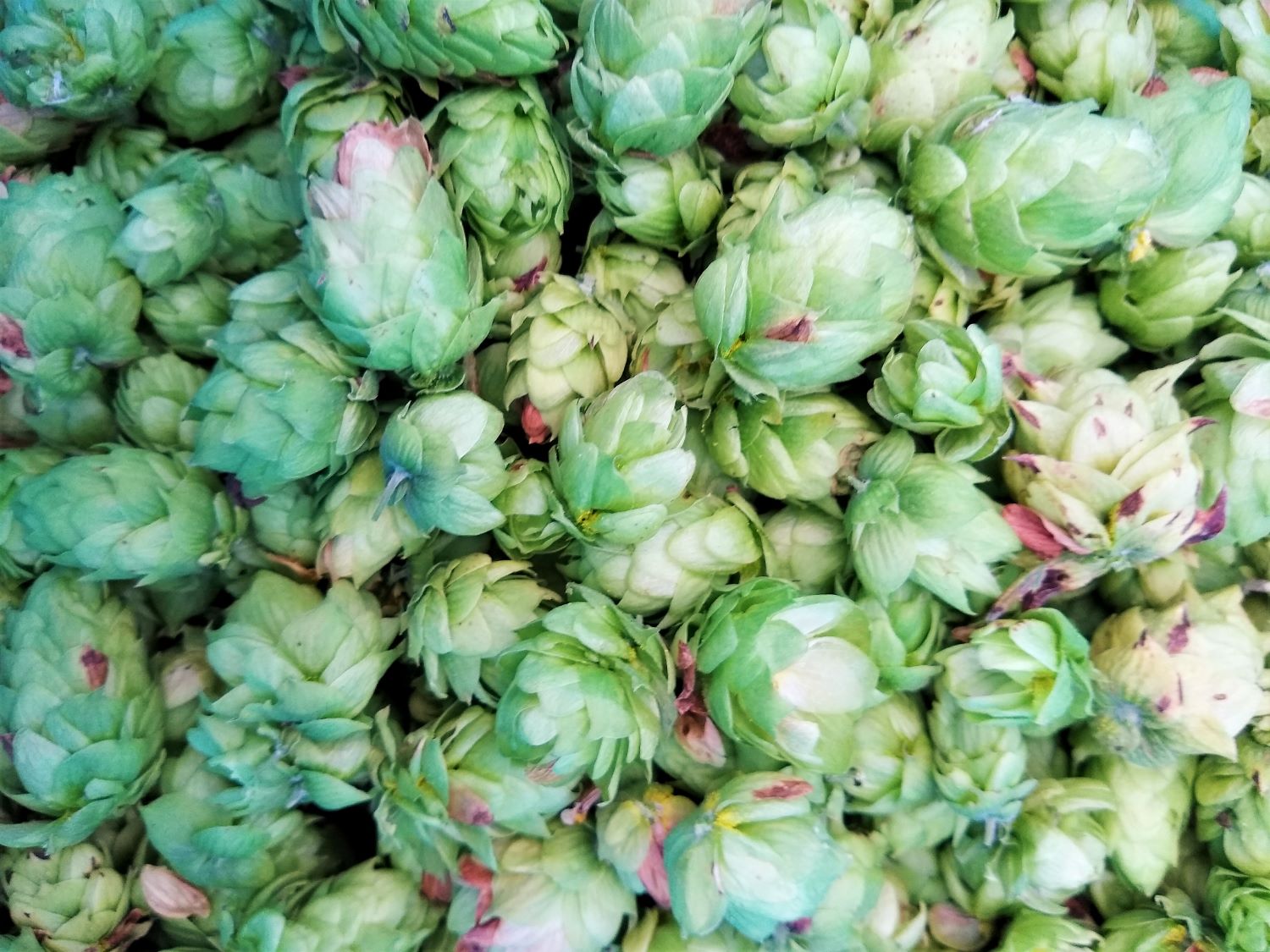
“Where we are in rural Ohio, there’s still more breweries being opened up and being thought about and planned for, so there’s always more opportunity,” says Nick Zachrich. Ohio currently has about 35 hop farms, but most are quiet small; Zachrich has about 1,100 plants on 1.25 acres. Nick Zachrich adds that having a relative lack of small hop farms in the area actually makes it difficult for them to keep up with demand. This makes it harder to reach new customers, and can lead to breweries looking past small hop farms as an option due to lack of availability. “We can only produce so much. More growers coming on would actually help give more visibility to the industry.”
The scarcity of local hops in this isolated market can lead to some good-natured territoriality from the brewers Zachrich serves—there is competition for their hops, and brewers don’t necessarily want every other brewery in the area to have access to the hops they need.
“We’re like that fishing hole around the corner that nobody is supposed to know about,” Nick Zachrich jokes, before clarifying he know these brewers aren’t going to give poor information to their colleagues; they just want to make sure they’ll still be able to get what they need.
Demand is a nice problem to have, but doesn’t make it any easier to decide what varieties to grow. Despite lagging several years behind urban areas when it comes to brewery openings and craft beer visibility, brewers in rural areas are savvy to national style trends and want unique hops. Nick Zachrich calls Cascade a “confidence builder” as it’s relatively easy to grow in Ohio and yields well, but brewers can already get it cheap elsewhere. Zachrich has had success with Cashmere—a variety whose popularity on the national level has dropped profoundly in recent years—and says the hop’s variability year to year isn’t as much of a concern for very small breweries as it would be for larger operations developing consistent package brands. Despite the variety nearly disappearing nationally, it’s still a strong seller in the small geographical niche in which Zachrich is thriving.
Malt’s Foundation Is More Stable
While hops are craft beer’s flashiest ingredient, malt is its foundation. Malt producers talked to for this article all expressed craft’s slowdown has had less effect upon the craft malt market than on their counterparts in hops. Sugar Creek Malt in Indiana and Rustic Brew Farm in Ohio both reported ongoing growth, largely because they’re still pursuing and finding new customers. It was a common refrain.

Rabbit Hill Malt in New Jersey was founded in 2015 by brother and sister Blair Bakker and Hillary Barile on their family’s fifth-generation farm. Barile says the business is still growing despite the leveling off of craft beer’s growth.
“If there’s an impact, it’s not resulting in less malt sales, but more,” she says. “I think some of it is that brewers are having to be more thoughtful with their purchasing decisions. They’re investing in craft malts as a way to differentiate themselves in a more challenging space.”
Barile is also the current president of the Craft Maltsters Guild, and says she believes this dynamic is playing out for most craft maltsters, some of whom are in the midst of expansion projects. She says craft malt has been a pretty easy sales proposition to make in most breweries she walks into.
“When you look at the overall expense of building out your recipe, hop expense can be huge, whereas a change from commodity malt to craft malt might not be as impactful to the cost,” she says. “There are customers who are never going to be my customer, customers who are excited, and customers who are convincable. Percentages of each have changed a little over time. There are still people seeking craft malt for the first time.”
Specialized malts are also seeing growth despite stagnation in craft beer overall. Grouse Malt House in Colorado produces exclusively gluten-free malt, and owner Twila Soles—who founded the business in 2013 with her late husband, William—says her business is somewhat protected from craft’s overall trends.
“We have seen a bit of leveling off, but our customers are a little isolated from the downturn because of that niche they’re supplying,” she says, explaining there are still new consumers discovering gluten-free beer.
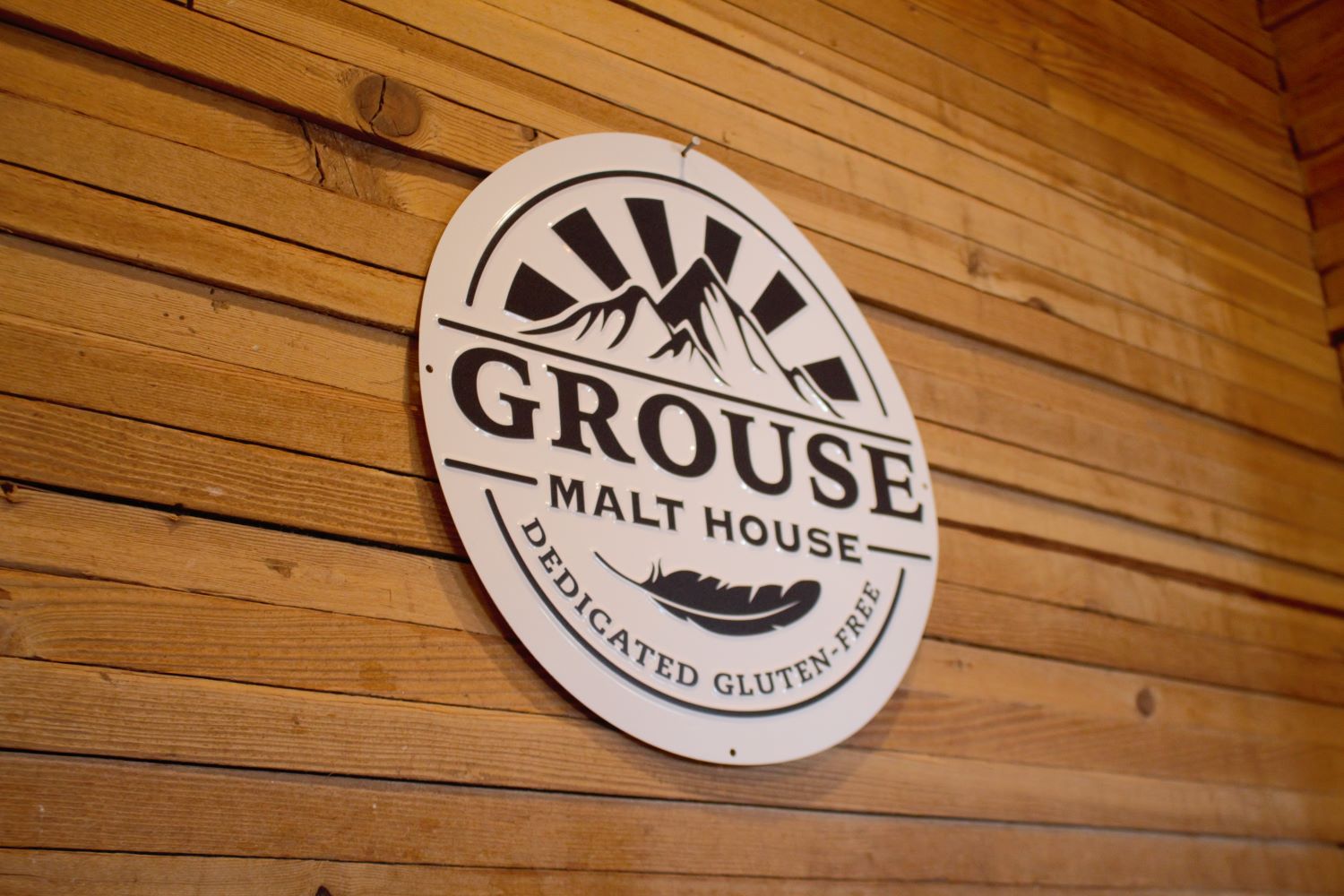
While Grouse sells to some dedicated gluten-free breweries, they’ve seen a lot of growth from traditional breweries that want to develop a gluten-free lineup. In some cases this is a single product line, but some breweries have leaned into the gluten-free option enough that they now have dedicated gluten-free brewhouses.
“Breweries are looking at gluten-free products as a way to distinguish themselves in an increasingly competitive market,” Soles explains.
Many breweries are pursuing differentiation and diversification as ways to reach new customers and stimulate new sales, and some ingredient providers may find a path forward by meeting the distinct needs that arise from these unique offerings.
The Road Ahead
The craft beer industry is still searching for a way to steady the ship in the midst of the current storm, and how its present instability will impact small ingredient providers long term remains to be seen. As breweries find niches in which to thrive, so must growers.
At Billy Goat, Gehlhausen and DellaBianca are pursuing an agritourism option to supplement their farm income. They’ve got a permit to have a small campground on their property, and they can sell beer and wine on-premise. Telluride, Crested Butte, Grand Junction and Durango are all nearby, and the farm is hoping they can benefit from their location so near to Rocky Mountain tourist destinations. In the September, they’ll host Southwest Fresh Fest, a festival of music and fresh-hop beers.
“It’s on all of us to talk about the good things that are happening, what’s exciting in our industry,” says Barile, highlighting the weight of gloom that can pervade a challenging market. She says that just as brewers have to find ways to reinvigorate excitement in their beer, small ingredient providers have to continue to share what makes them special.
“You have to share the things that are exciting and new about your business, those sparkling moments in the midst of what’s maybe not your best year ever.”
Craft beer’s definitely not having its best year ever, but the small farms and businesses that supply it are still looking toward the future with hope.


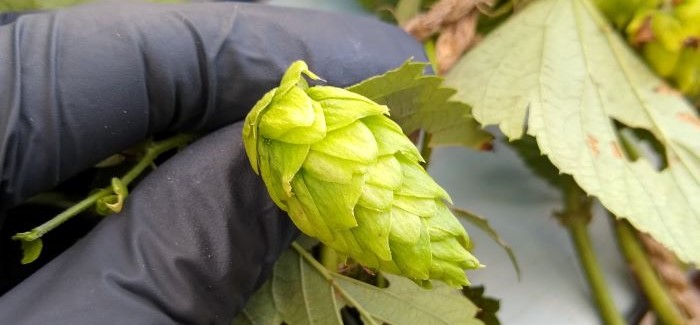

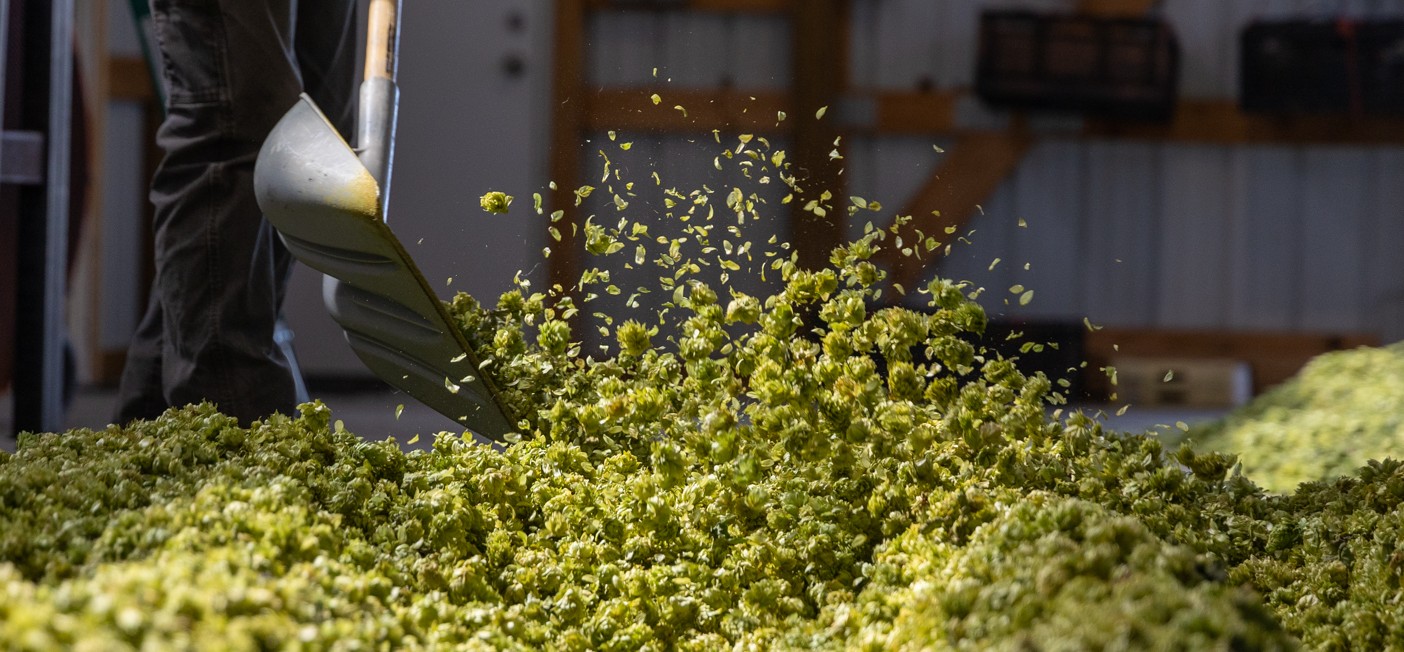


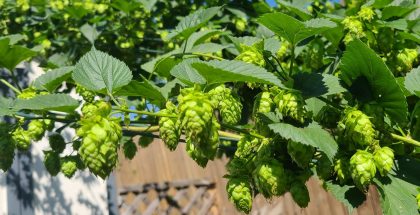
Submit a Comment